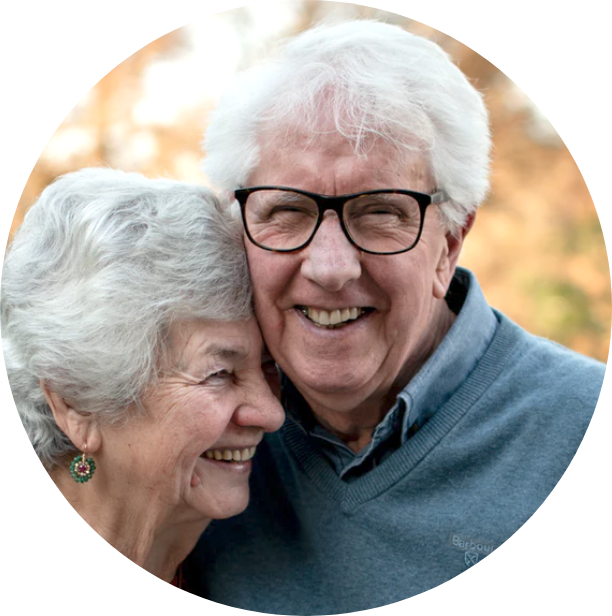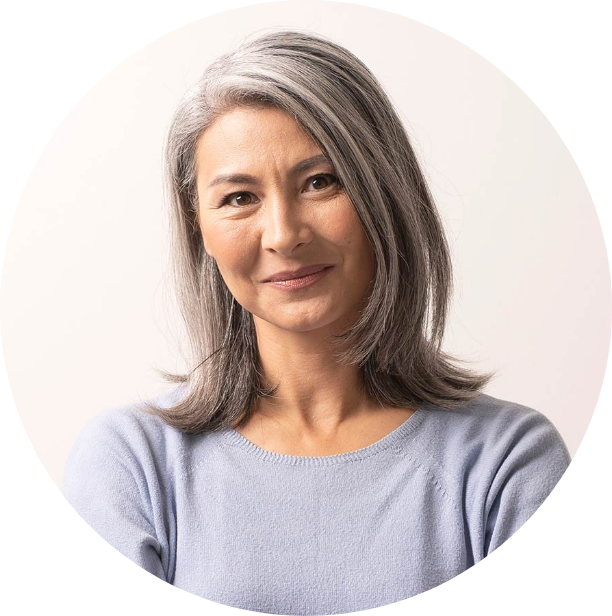Chronic Pain Rehab
Conveniently located to serve the areas of Los Angeles, Woodland Hills, Agoura Hills, Northridge, Van Nuys, Sherman Oaks, Thousand Oaks, Tarzana, Encino, Chatsworth, Calabasas, Bell Canyon and Westlake Village.

Chronic pain rehabilitation is a type of comprehensive treatment plan that takes into account several lifestyle factors that work to help patients live pain-free lives.
Are you suffering from pain on a daily basis but are looking for a way to manage your symptoms other than medications or surgical interventions?
Comprehensive Rheumatology Center in Greater Los Angeles is introducing an intensive, 16-week program that focuses on lifestyle changes and alternative management to decrease chronic pain and suffering and increase your quality of life. Under the guidance of our board-certified rheumatologists, Dr. Nazanin Firooz and Dr. Phillip Aleksiejuk, our practice focuses on delivering treatments based on medical and scientific research. To get in touch with us, give us a call at (818) 598-0000 or fill out our contact form, and we will get back to you as soon as possible.
What is Chronic Pain?

Pain is our body’s normal response to injury. Most of the time, once the injury heals, the pain stops. However, in many people, the pain continues long after its cause is gone. When it lasts longer than 3 months, it is called chronic pain. Many conditions can trigger chronic pain, including arthritis, back pain, headache, fibromyalgia, stress injuries, and nerve damage, among others.
While we don’t know exactly why chronic pain occurs in some people, it appears that the cause is an overreaction- or hypersensitivity- of the central nervous system (the brain and the spinal cord). (1) In other words, the central nervous system “turns up the volume” in response to a stimulus that may normally not be painful, or less painful to other people.
Many factors contribute to the persistence of pain, including stress, poor sleep, and physical inactivity. Recently, certain food insensitivities have also been tied to chronic pain. No treatment of chronic pain is complete without addressing all the different factors that may continue to contribute to pain.
To treat pain then, we must first rule out continued injury, including musculoskeletal and neurologic injuries, that cause continued pain. Once that is ruled out, then we need to retrain the brain and the central nervous system to react appropriately to unpleasant stimuli.
How Do We Treat Chronic Pain?

Our chronic pain program at Comprehensive Rheumatology Center involves a multi-disciplinary, holistic approach to the treatment of chronic pain. We first investigate a full history of the origin and cause of the pain to rule out persistent injury. Then we launch a full investigation into all the factors that can contribute to chronic pain, including stress, physical activity, diet, and sleep. After a thorough evaluation, we then devise an individualized treatment program and tailor it to what would best benefit each individual.
Specific treatments include but are not limited to:
- Physical therapy programs
- Sleep consultation and sleep hygiene education
- Elimination diet education and implementation
- Cognitive behavioral therapy (CBT)
- Review of the use of vitamins and supplements that can alleviate pain
While the use of medications is not discouraged, in this program we focus on the non-pharmacological ways to treat chronic pain. By the end of the program, you may find that you no longer need the medications you have used in the past for your pain.
Personal Consultation
We feel that nobody should just endure chronic pain. Chronic pain can be draining and exhausting, and it can interfere with one’s normal function. While chronic pain may not be curable, it is very much possible to tame it, regain function and comfort, and live a happy and active life. Our goal with this program is to reduce pain and restore quality of life. To begin your journey toward chronic pain rehabilitation, we invite you to schedule a personal consultation.
If you need a team that can help you every step of the way, reach out to Comprehensive Rheumatology Center in Greater Los Angeles at (818) 598-0000 or fill out our form available online.
Treatment Options
We understand that motivation and access are difficult factors while living with chronic pain. While most of the components of the program can be done conveniently in our office or remotely via telemedicine, any outside resources will be coordinated by our office so that you can focus on feeling better.
In general, our treatment plans may consist of:
- Anti-inflammatory diet education. Foods such as blue fish, extra virgin olive oil, nuts, fruits, legumes, vegetables, yogurt, turmeric, and kefir have all been proven by research to help fight inflammation in the body, the main mechanism of pain. (2)
- Physical therapy programs. Prescribing gentle physical therapy serves to strengthen weak muscles, fix muscular imbalances, increase flexibility, and improve your range of motion- helping you to get back to activities you love. We help patients of all ages with all types of musculoskeletal immobility. Whether you need help taking your first pain-free steps or simply getting back into a sport, there is a program customized for your unique body.
- Sleep consultation and sleep hygiene education. Sleep not only plays a huge role in mental health, but it affects nearly all aspects of your physiological well-being and recovery from exercise. Studies show that the process of sleeping actually removes toxins from your brain. (3) With a sleep consultation, we can also determine if you have a sleep condition that requires treatment and take the necessary steps to correct it.
- Mindful Based Stress Reduction (MBSR) instruction and practices. MBSR practices were first developed by molecular biologist Jon Kabat Zinn in 1979. This type of stress-relieving program incorporates aspects of yoga and meditation to facilitate a healthy mind-body connection that mitigates pain.
- Activities to promote the self-healing powers of the brain. The mind plays a powerful role in how we perceive pain. By harnessing the principle of neuroplasticity, the brain can adapt and change even after it is injured.
- Implementation of vitamins and supplements that can help alleviate pain. Some vitamins are antioxidants that are incredibly effective at preventing further tissue damage. Others may help to boost your immune system, allowing your body to fight off infection and effectively reduce inflammation. At Comprehensive Rheumatology Center, we offer supplementation in the form of diet education, IV vitamins, and the Myers cocktail IV drip.
- Coordination with other specialists as needed. As a team of rheumatology specialists, we understand that other physicians, physical therapists, neurologists, etc. have more experience and knowledge in their specific field. For this reason, we often refer our patients to other specialists who can provide more assistance in their journey toward feeling better.
Are you the right candidate for this program?
You may benefit from the chronic pain treatment program if:
- You have experienced daily pain for at least 3-6 months
- You have pain that interferes with your daily life
- You are motivated to manage your pain and change the way your central nervous system perceives pain
- would like to minimize the need for medications
What happens if you quality for the program:
- You will first have a thorough investigation into the root causes of your pain.
- You will then receive a personalized treatment program that will address all factors that contribute to your pain.
- Once you start the treatment program. We will be there with you every step of the way, guiding you through to the finish line.
Are you ready to start?
This is an exciting journey that involves a multi-disciplinary approach to pain and requires a serious commitment. At the end of the program, most people report a significant improvement in their pain level as well as regaining function.
As you are considering if you are the right candidate for this program, ask yourself:
- Is my life focused on pain? Do I alter my activities because I’m worried about pain?
- Have I stopped doing things that I enjoy because of pain?
- Am I concerned about the long-term effects of pain medications (or surgeries) to treat my pain?
- Does it seem that nothing I do alleviates the pain?
- Do I feel anxious, irritable, or depressed from pain? Is it affecting my relationships?
- Am I tired enough from the pain to be ready to commit to treating it from the root?
Testimonials
“I have been seeing Dr. Firooz for my fibromyalgia for years now and I love her. She is friendly, caring, listens to her patients, and is willing to try different treatments to get the help you need. I had seen a couple of other rheumatologists before her and they just wanted to pump me up with ten different medications, that made me feel not like myself. Dr. Firooz though, takes what you say and want into consideration. I would recommend her to anybody that needs a rheumatologist.”
-Amanda B.
“I was referred to Dr. Firooz back in June of 2016. I received an accurate diagnosis for a rare autoimmune disease within two weeks (my research shows that this disease normally goes undiagnosed or misdiagnosed for several years, during which time irreversible damage may be done to major organs. After seven months under her care, I have improved dramatically and am living a semblance of a normal life. Dr. Firooz is punctual, compassionate, and very knowledgeable. I’ve never felt rushed or condescended to. I appreciate that she teaches in this field and continues to stay on top of the latest research. I know I am in good hands!”
-Laurin D.
“The doctor and entire staff were completely professional and helpful. They were very friendly and went out of their way to make me feel better, even though I was ill. Very impressed!!”
-Paul W
“I have been struggling for over a year with a pesky case of psoriatic arthritis, which they have gone above and beyond to help me try to get into remission. During this crazy time of Covid, they still managed to help me and make my life as easy and comfortable as possible, while managing the ongoing symptoms. I can’t imagine how many other doctors would have helped me the way that they have.”
-Ruth D.
“I have been a patient of Dr. Firooz for several years. I travel close to two hours to see her because quite frankly, she is the best rheumatologist around. She listens to her patients and doesn’t fill them up with medications that aren’t needed. She is comprehensive in her assessments and always makes one feel comfortable. The office is beautiful and the staff is always willing to walk the extra mile for your needs. I appreciate Dr. Firooz and her staff.”
-Paulette T.
“Over 4 years ago I was referred to Dr Firooz & I’m so so thankful I was! I had gone to several doctors & specialists prior, but none could figure out what my symptoms were being caused by. Dr Firooz was the one who properly diagnosed me & got me on the treatment plan that made my symptoms so much more manageable. And for that I will forever be grateful to her!”
-Ashley M
Corresponding and Complementary Treatments
We employ alternative medicine treatments whenever we can in order to boost the effectiveness of the pain management program:
Prolotherapy
Injections used in prolotherapy are made of saline, lidocaine, and dextrose, which is a type of sugar. When these are administered to an injured area, they stimulate a boost in the body’s healing processes.
PRP Injections
PRP (Platelet-rich plasma) treatments utilize the healing power of your own blood. After one of our physicians draws a sample of your own blood, they will separate all of its components and isolate blood plasma. Your plasma contains proteins called platelets that are usually responsible for clotting wounds. These proteins, however, contain molecules called growth factors that are specialized to healing various types of tissue– such as tendons, ligaments, and cartilage. PRP is incredibly safe since it uses your own body’s tissue, making it completely biocompatible and eliminating the risk of rejection.
Stem Cell Therapy
Stem cells, particularly mesenchymal stem cells, are able to produce “daughter cells” that have individualized functions. These daughter cells are capable of producing their own specialized cells that make up different types of tissue. So, if you have an injured shoulder muscle, stem cells can be administered so that more of these specific muscle cells can proliferate. Stem cells also work to promote angiogenesis, the creation of new blood vessels. Adequate blood flow is incredibly important for the healing of new tissue formation.
Cost of Chronic Pain Rehabilitation in Greater Los Angeles
During your personal consultation at our office, you will be given a cost estimate for your recommended treatment plan. We will do all insurance verifications to give you an idea of the out-of-pocket cost to you, if any. Please reach out to us today at (818) 598-0000 or visit our online contact page to begin feeling and looking like your best self.
References
- Dydyk, Alexander M., and Amy Givler. “Central Pain Syndrome.” PubMed, StatPearls Publishing, 2023, www.ncbi.nlm.nih.gov/books/NBK553027/#:~:text=Centralized%20pain%20occurs%20when%20the.
- Sala-Climent, Marta, et al. “The Effect of an Anti-Inflammatory Diet on Chronic Pain: A Pilot Study.” Frontiers in Nutrition, vol. 10, 13 July 2023, p. 1205526, www.ncbi.nlm.nih.gov/pmc/articles/PMC10381948/#:~:text=In%20addition%2C%20the%20consumption%20of, https://doi.org/10.3389/fnut.2023.1205526.
- Eugene, Andy R, and Jolanta Masiak. “The Neuroprotective Aspects of Sleep.” MEDtube Science, vol. 3, no. 1, 18 Nov. 2015, pp. 35–40, www.ncbi.nlm.nih.gov/pmc/articles/PMC4651462/.
Call Us Now: (818) 598-0000






